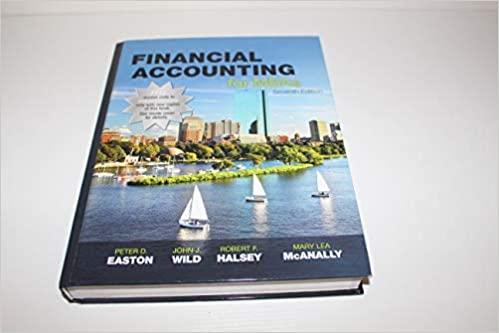Question
Question: Please help solve practice case study below: For the financial analysis: Present one or more ratios to represent each of the four areas of
Question:
Please help solve practice case study below:
For the financial analysis:
Present one or more ratios to represent each of the four areas of financial analysis:
Profitability (more than Gross Profit Margin)
Liquidity
Leverage (what I call Risk)
Activity (what I call Efficiency)
Sales of Kraft Heinz Co. KHC -0.50% 's beleaguered products fell more than anticipated in the third quarter, but the food maker beat profit expectations after a year of weak results and strategic turmoil.
The maker of Velveeta cheese and Oscar Mayer meats on Thursday reported $6.08 billion in sales for the third quarter, a drop of about 5% from a year earlier. However, its adjusted profit of 69 cents a share topped analysts' 53-cent forecast.
Shares rose 13% to $32.33 on Thursday, their biggest bump on any day since Feb. 17, 2017, when the company made an ultimately unsuccessful offer to acquire Unilever SA. The stock had fallen 34% this year through Wednesday.
Kraft Heinz appointed a new chief executive, Miguel Patricio, this year after accounting errors and poor sales sapped some $17 billion in value from some of the company's best-known brands.
Those write-downs, in February and August, show how Kraft Heinz has struggled even more than some other food makers to get ahead of trends favoring newer and more natural foods.
Mr. Patricio said turning around Kraft Heinz will require discontinuing some low-margin brands, shifting innovation to fewer, more promising new products, and making its supply chain more efficient.
The company is also working to improve relations with retailers. Kraft Heinz has struggled in recent years with late deliveries to stores, cut its promotions and wasn't communicating enough with retailers, he said.
"There are still scars from the past," Mr. Patricio said.
Since its formation in a megamerger more than four years ago, the maker of Jell-O desserts, Philadelphia Cream Cheese, Planters nuts and many other long-lived brands has seen cheaper store brands and trendy products steal shelf space from many of its longstanding brands. It also sells many single-ingredient goods like Maxwell House coffee and Oscar Mayer meats that are easy to mimic and rely on thin margins tied to volatile commodity costs.
Kraft Heinz said comparable sales for the third quarter dropped 1.6% in the U.S., its biggest market. Price increases bolstered sales of macaroni and cheese, Lunchables and other products, the company said, but sales volumes fell for cheese and cold cuts.
The private firm that runs Kraft Heinz, 3G Capital, has long been known for its acute cost-cutting spearheaded by a process called zero-base budgeting. For years, that spurred impressive returns for investors at companies it controlled or had a major hand in, including H.J. Heinz Co., Burger King and Anheuser-Busch InBev SA .
But its inability to replicate that performance at Kraft Heinz by moving on to another merger has called into question the long-term sustainability of its business model.
After the merger, Kraft Heinz was able to cut nearly $2 billion in annual costs, allowing it to post profit margins that lead the food industry. But that metric has gotten squeezed over the past year by higher costs and internal missteps. Kraft Heinz's adjusted profit margin continued to tighten in the third quarter, though the decline moderated from earlier this year.
Part of the problem, executives said, is that new products stole sales from existing ones. Some of those new products were also made by external manufacturers, adding to costs.
"Innovation brought a lot of complexity to the system," but hasn't translated into additional sales, Mr. Patricio said.
Comparable sales, or those excluding currency fluctuations, mergers and divestitures, weakened 1.1% globally.
Kraft Heinz reported a quarterly profit of $899 million, or 74 cents a share, up from $619 million, or 50 cents a share, last year, thanks to the divestiture of its Canadian cheese business.
Step by Step Solution
There are 3 Steps involved in it
Step: 1

Get Instant Access to Expert-Tailored Solutions
See step-by-step solutions with expert insights and AI powered tools for academic success
Step: 2

Step: 3

Ace Your Homework with AI
Get the answers you need in no time with our AI-driven, step-by-step assistance
Get Started


